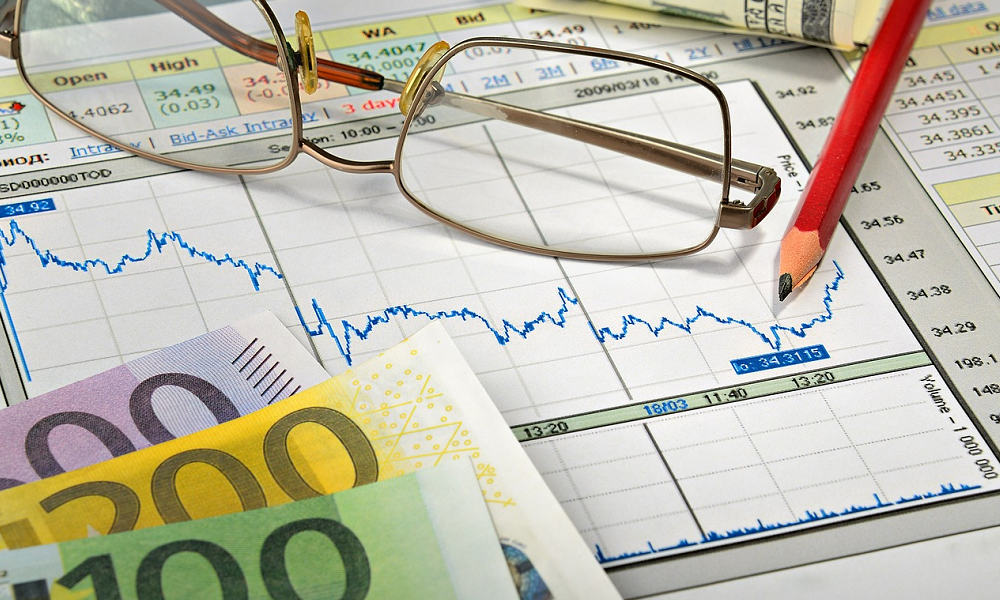Business
Wealth Building through High Dividend Investments: A Strategic Investor’s Roadmap

For stock market investors, there are many avenues through which income can be generated, and high-dividend stocks are certainly a very preferred category. In fact, the stocks with the highest dividends are — by definition — the ones that generate great returns through periodic payouts. This article explores what high dividend stocks are, what advantages they bring, and goes on to present some notable examples available in the current market, thereby giving investors a road map toward constructing an enduring and income-generating investment portfolio that could come close to challenging conventional savings methods. Increasingly, as skilled investment instruments, dividend stocks provide the investor with some compromise between investing for preservation and undertaking high-risk investments with a high degree of volatility, thereby allowing for some much-needed sophistication between wealth building and financial security.
Understanding High-Dividend Stocks
High dividend stocks refer to stocks in such companies that declare huge dividends, that is, distribute a major proportion of their profit among shareholders. The companies are usually considered mature, belong to stable industries, and sustain a good record of being profitable. It is the combination of these factors that makes investors interested in these stocks and their promised income, especially during the weeks of bumpy markets. Much more than that, these stocks tend to represent mature companies with stable financial backgrounds, proven business models, and the capability to generate sustainable cash flows that allow them to pay dividends regularly to their shareholders. Above all, they instil a lot of comfort by providing reasonable assurance for investors’ returns in today’s difficult global financial climate, which tends to leave behind some of the traditional approaches to investing.
Advantages of Investing in High-Dividend Stocks
There are multiple advantages to investing in highest dividend yield stocks. In the first place, they provide a regular income, which is attractive in itself to many retirees or those looking for passive income. Secondly, these stocks tend to be well-established businesses with solid and stable financial records, thereby lowering the risks associated with investing in them. A resume for the purchase of stock certificates would also compound the potential growth. Sources of growth that concentrate on a reinvestment strategy can take an initial investment and through consistent and disciplined reinvestment can potentially multiply that wealth many times over. Besides, high dividend stocks are good financial management tools to plan against, so investors may create predictable income streams according to their personal financial goals, retirement plans, and long-term wealth preservation strategies.
Notable High-Dividend Stocks in the Market
There are numerous companies known for providing very high underlying dividend yields, such as Altria Group. Altria is an accompaniment of tobacco giants that has led the industry as one of the highest dividend-paying stocks in the S&P 500 for a long owing to stable business investment and income security. Meanwhile, AbbVie, an international biopharmaceutical company, has also been one of the attractive dividend-yielding companies, which sends its fans flooding towards it. The others include electric power utility companies, real estate investment trusts, and tried-and-true banks that paved dividends to shareholders for consistent and attractive dividends. Leaving traditional landscapes of dividends behind, new sectors that maturing include technology infrastructures, renewable energy firms, and even advanced hauliers have begun including dividends with an increasingly modern approach to investment opportunities.
Factors for Consideration in High-Rate Dividend Stocks
Enticing as they are, high dividends must come with conditions to check before an investment commitment. The first pertains to whether the dividends would be sustainable; such a company’s dividends could have been earned over time and paid continually or in intervals in the past. Besides that comes understanding the payout ratio of the company, which tends to analyze the extent of earnings actually distributed as dividends, hence giving a clue from which future dividend growth could be psychologically appreciated. Investing here could indicate greater chances for future income from dividends in the company, as lower versus payout ratios indicate reserved and reinvested income for growth. Interestingly assessors will also find the general financial health of the company checked: debts and revenue growth, market position, and possibly future prospects as well. The best of advanced strategies now include a complete multi-dimensional analysis at the forefront of advanced financial technology and forecast models for a long-term view, not just current dividend situation assessment but also the potential for long-term sustainability and growth potential.
Diversification and High-Dividend Stocks
Therefore, increased income becomes balanced against risk on the income front, from a mix of high dividend stocks into a diversified portfolio. As a result, the absence of such concentration would mean that an economic downturn or sector-specific poor performance would not drag the entire portfolio down. The strategy captures both conservative and growth-minded investments. Diversification across sectors and industries will ensure that at least one or two investments perform well while underwriting some underperformers, thus adding to the potential for income as well as capital appreciation. Examples of sector breakdowns include technology, healthcare, energy, finance, and consumer goods offering a diversified investment approach that will not only shield an investment portfolio from downtime but will probably yield a more stable return in the long run.
Tax Implications of High Dividend Stocks
Dividend income tax treatments must be understood well by investors who wish to maximize returns from high dividend stocks. The various types of dividends have different tax rates, with qualified dividends usually receiving more favorable treatment than ordinary dividends. Holding period requirements and other special IRS guidelines must be understood in regard to whether a dividend qualifies for lower tax rates.
Conclusion
High dividend stocks allow the investor to draw a regular income while investing in stalwarts. Picking sustainable dividends with a diversified portfolio allows income and growth. However, like all investments, research and consideration of personal financial objectives are required to maximize the benefits of investment in the highest dividend stocks. Successful investment strategies involve constant monitoring, periodic portfolio reshuffling, and an understanding of market and company performance.

-

 Legal6 days ago
Legal6 days agoMichigan man JD Vance sentenced to 2 years for threatening Trump and JD Vance
-

 Politics1 week ago
Politics1 week agoU.S. to designate Maduro-linked Cartel de los Soles as terrorist organization
-

 Health1 week ago
Health1 week agoCambodia reports fatal H5N1 bird flu case in 22-year-old man
-

 World4 days ago
World4 days agoHurricane Melissa registered 252 mph wind gust, breaking global record
-

 Legal4 days ago
Legal4 days agoWoman in critical condition after being set on fire on Chicago train
-

 Politics1 week ago
Politics1 week agoEpstein survivors release PSA calling on Congress to release all files
-

 Legal4 days ago
Legal4 days ago1 dead, 2 injured in shooting at Dallas Walmart parking lot
-

 Legal3 days ago
Legal3 days agoSuspect in San Diego stabbing shot by authorities after fleeing into Mexico




